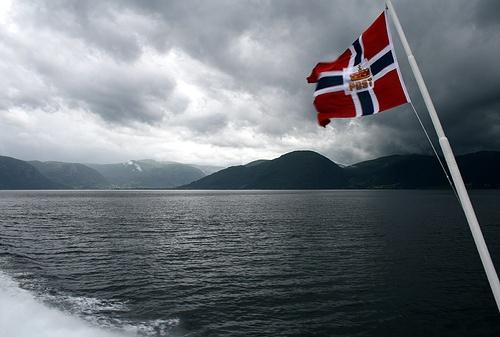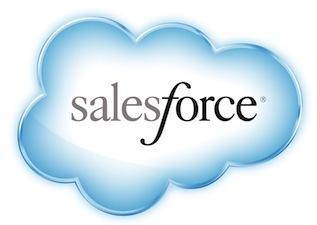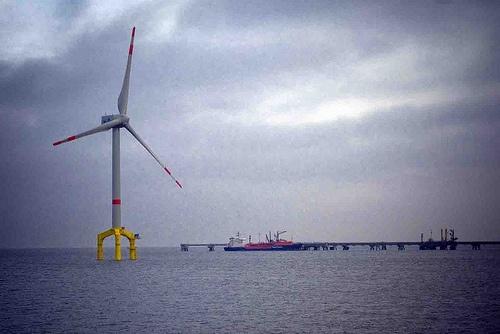The Ethical Work of Norway’s Sovereign Wealth Fund


Last week wasn’t a great one for companies in the extractive industries. In South Africa, a wage strike by the Association of Mineworkers and Construction Union (AMCU) against the world's top three platinum producers -- Amplats, Lonmin and Impala Platinum -- entered its eighth week, with no end in sight.
In Norway, the Ethics Council of the state’s Sovereign Wealth Fund (SWF or the Fund) released its 2013 Annual Report and announced that it was examining the operations of French oil giant Total, in the disputed Western Sahara, to determine whether its activities there are unethical and warrant exclusion of Total by the Fund. Days later, Norway’s Prime Minister proclaimed that the Fund would be investing a greater proportion of its wealth in renewable energy; the Fund is also considering exiting oil, gas and coal investments altogether, for environmental reasons (the arguable hypocrisy of which has been noted).
Norway operates what is by far the world’s largest sovereign wealth fund, with approximately $840 billion in assets under management, so its investment decisions are powerful. For example, the World Wildlife Fund, which has encouraged Norway’s SWF to invest up to 5 percent of its assets in renewable energy, commented that such a move could have a “global impact and redefine how we use money consistent with commitments to limit climate change.”
The Fund’s Ethics Council, an independent group appointed by the Ministry of Finance, makes periodic recommendations to the Ministry on companies that should be excluded from the Fund or placed under “observation,” and the Ministry has established ethical guidelines against which the council measures companies’ conduct. A current list of excluded companies can be found here, though the council may from time to time recommend the removal of a company from the exclusion list if its conduct becomes consistent with the Fund’s guidelines.
The council typically recommends a company for exclusion due to concerns that the company is associated with gross breaches of human rights, gross corruption or severe environmental damage. All of the council’s recommendations are published in its annual reports, and the final decision whether or not to exclude a company from the Fund resides with the Ministry of Finance.
This year, the council contacted 43 companies, met with 18 and made 13 recommendations for exclusion, 12 of which resulted in decisions by the Ministry to exclude companies from the Fund. (Report, 8-9) The majority of the council’s 2013 recommendations concerned severe environmental damage; only one concerned human rights violations (the Ministry accepted the council’s recommendation to exclude Zuari Agro Chemicals Ltd. for using child labor in the production of hybrid seed in India).
The 2013 Report itself is worth a read, in part for its observations regarding the evolving ethical behavior of multinationals. For example, I found insightful the the council’s statement that, “Companies’ actions in resource-rich countries with weak governance systems can have a profound impact on the living conditions of the local population.” One example of this is the council’s work, over the last two years, regarding the operation of oil companies in Equatorial Guinea, the third-largest oil and gas producer in sub-Saharan Africa.
Although the World Bank ranks Equatorial Guinea’s GDP as “High: non OECD,” the average life expectancy there is 51 years, and child mortality is on par with Afghanistan. In other words, it seems the the country’s “substantial [oil] revenues are not being used to improve the living conditions of the population,” which may constitute a gross violation of human rights under the International Covenant on Economic, Social and Cultural Rights. Though the council does not suggest that companies are to blame for the culture of corruption in Equatorial Guinea, it does recommend that companies “make systematic, deliberate efforts to prevent their activities from having negative consequences” and put in place “robust systems ... for preventing corruption, publish payments made to authorities, persons and companies closely connected to the governing elite,” and comply with the U.N. Guiding Principles on Business and Human Rights. (Report, 24) Here, here.
On a positive note, the council concludes that the way in which companies view and express their responsibility for human rights is changing. For example, the council notes the existence of “many initiatives at both the national and international level that aim to improve working conditions.” The council also believes that companies are responding more quickly to allegations of human rights abuse and implementing remedial measures sooner than ever before. (Report, 30) If true, certainly a welcome development and reflective of the impact of the Guiding Principles.
In addition, companies would be wise to take note of the council’s focuses for 2014, which include:
- Increased scrutiny in connection with “environmentally damaging fishing and the conversion of forest into plantations”;
- Extractive companies operating in Western Sahara (as reflected by its focus on Total);
- Labor rights, particularly in the textiles industry; and
- Companies in the oil and gas sector operating in countries presenting a “particularly high risk of corruption.”
Interestingly, the 2013 Report also had an added political context, in that it served as something of a response to the Ministry of Finance Strategy Council’s earlier report, which sought to “reduce the political effectiveness of the [Fund] as an actor, through private markets, in the development of corporate governance and social responsibility standards.” In 2013, the Strategy Council advised the Ministry to reassign the Ethics Council’s work to Norges Bank, and recommended that the Ministry no longer publish the reasons for excluding particular companies.
It seems beyond dispute that the Strategy Council’s recommendations against publication would severely undercut the power of the Ethics Council’s work. As the council puts it:
The “public reasonings [of the Ethics Council] have been one of the most important components of the present system. Publication of recommendations has given the general public insight into the work being done, and the opportunity to evaluate whether the guidelines safeguard ethical values.” (Report, 12-13)
In other words, the council’s reports serve a shaming function as well as a financial one. Furthermore, the publication of the Ethics Council’s recommendations has helped focus international attention on corporate social responsibility and business and human rights. A number of other investors follow the council’s recommendations, which compounds the impact -- and heightens the deterrent effect of -- the Ministry’s decisions. Hiding the reasoning from view would lessen the shaming effect and give some investors cover for keeping Fund-excluded companies in their portfolios. Let’s hope the Ethics Council wins this debate and can continue its important work in socially responsible investing.
Image credit: Flickr/i_am_neuron
The Top 5 Reasons to Digitally Publish Your Next G4 Report


By Marion Dupont
With the dozens – maybe hundreds – of G4-related articles that have been published in the last few months, it’s difficult to write something fresh about the topic. And yet, I think I still haven’t read a single piece highlighting the bridges between G4 and the other major trend that has been shaking up the sustainability reporting world lately: social and online reporting.
Nobody seems to draw the line between publishing a report based on the Global Reporting Initiative's G4 guidelines and publishing a digital version of such a report online. Is it because companies can only advance one step at a time? Do you feel like you’ll either need to choose between investing time, resources, money and efforts into a beautiful online report that will leverage your audience, or following the new and exciting version of the GRI framework instead?
It’s a shame because online publication and G4 reporting actually do form a great couple, as they both focus on the most important aspect of your corporate social responsibility (CSR) reporting: your stakeholders.
By putting materiality at the core of your reporting process, the G4 makes sure your report’s content will focus on what’s important for your stakeholders. By publishing your report online, you will significantly increase your audience, providing incentives to access the information and engage with it. More interesting and relevant content aligned with more open access are two faces of the same coin: a real and meaningful stakeholder engagement process based on comprehensive information and accessibility. One shouldn’t go without the other, unless you are ready to miss out on an incredible opportunity to convince your stakeholders about the impact of CSR on your organization and so, to influence their decision-making through CSR reporting.
As a result, here are the top five reasons you should publish your next G4 report online:
1. More direct engagement and social dialogue
Meetings, phone calls, public events, online polls and, more recently, social media, are so far the most useful tools to engage in dialogue with stakeholders around CSR performances.
According to Cone Communications, 62 percent of global consumers report using social media to engage with companies around social and environmental issues. But all this dialogue is happening outside the report and not inside of it. Corporations should see their reports as an engaging and interactive tool to converse with their stakeholders, and not only as a communication (top-to-bottom) tool to let them know what’s happening.
By making sure your report is online and providing the right features to your stakeholders, they’ll be able to leave public comments, rate your content, share their favorite stories on social networks and especially, provide great feedback about your report and performance. This meaningful engagement will help you adapt your materiality matrix to what they truly think is important and improve your reporting over the years.
2. Improved transparency and trust
In today’s world, consumers, employees and any type of stakeholders who have an internet connection can take screenshots, share comments on social media and give their opinion on anything available online.
Your report is not spared: Conversations are already happening on the 2.0 Web space, debating about your organization’s performance. You can’t avoid them by hiding your CSR report at the back of your corporate website. But on the contrary you will demonstrate transparency and build trust with your stakeholders if you let them engage with your report, share their opinion and spread the word on social media.
As John Friedman (Corporate Responsibility Communications at Sodexo) recently said on Twitter: ”If you worry about what your employees will say about your company on social media, your problem is not social media." Transparency is a key value of the GRI G4 and can be facilitated by an online publication.
3. Interactive storytelling
Have you ever wondered why most people don’t read sustainability reports? Because they aren't attractive and engaging enough! People don’t consume pages and pages of text anymore; they need short and fun content to browse on their smartphones and share on their Instagram or Pinterest accounts. Inserting videos or visual infographics in your online report is a much more effective way to broadcast your message. For instance, G4 put the emphasis on describing your value chain which is -- let’s admit it -- not the most fascinating part of a sustainability report. Try to represent it by using interactive content or maps your readers can play with.
4. Better fit to stakeholders
The other problem with the traditional CSR report is that we all get the same content, whether we’re customers located in the U.S., employees based in Europe or suppliers working in a factory in China. But all the different types of stakeholders are not interested in the same topics, and they don’t have time to go through the entire report to search for the information that targets them.
Effective Web-based publications now play with different levels of information by providing filters according to their targeted stakeholders groups, so that you can access aspects that are material to you in two clicks. Besides, it is becoming easier for stakeholders to understand presented data by changing their units, scopes or years using interactive charts.
5. A clearer picture of your audience
With tools like Google Analytics, it’s easy to know how many people accessed your online report, read it or shared it on social networks. You’ll also be able to know where they’re coming from and how long they viewed each page of your report. It will become a lot easier to know the stories that captivate them the most, or the part that didn’t interest them, to keep improving your reporting storytelling.
Companies now have the opportunity to increase the impact of reporting more than ever by going online. Digital reporting will not change the mind of corporations that don’t want to be transparent or are not ready to play the game. Change takes time, it has always done. However, whether you’re a first-timer or an experienced reporter, keep in mind that providing new incentives and tools to produce better reports will not only increase your performance and reputation, but also put your stakeholders back at the center of your reporting process.
Marion Dupont is the Marketing Manager of Wizness and helps companies create and publish interactive CSR reports online. She tweets @Wiznessplatform.
Stories & Beer: Corporate Sustainability Reporting


It's time for another Stories & Beer Fireside Chat on Thursday, March 20 at 6:30pm Pacific (9:30pm Eastern) at the Impact HUB San Francisco - and online via web cam.
Please join us in person at Impact HUB San Francisco for our latest “Stories & Beer Fireside Chat” on Thursday, March 20th at 6:30pm when TriplePundit's Founder, Nick Aster, will be chatting with Dan Fibiger of GAP Inc and Erin Decker of Salesforce.
In this chat, we’ll go behind the scenes with two seasoned sustainability reporters at major corporations. We’ll aim to ask and answer: How does sustainability reporting play out in the trenches? Erin and Dan will share tips and lessons learned. The chat will be valuable for anyone interested in bringing increased transparency to their organizations' transparency or getting into the sustainability reporting field.
[LIVE VIDEO WILL PLAY BELOW ABOUT 7PM PST]
We're dedicating this month's Stories and Beer to sustainability reporting in honor of our upcoming GRI-certified sustainability reporter course happening in San Francisco March 20-21. More info here.
Can't make it in person? The event will stream live on this page, just bookmark it and come back. Converse via Twitter with hashtag: #3pChat.
Schedule:
6:30 – 7:00 – beers, grilled cheese, and networking
7:00 – 8:00 – fireside chat and Q&A
8:00 – 8:30 – networking
About our guests
Erin Decker
Erin Decker is the Sustainability Manager for salesforce.com, where she is responsible for setting, managing and executing the global environmental strategy. She’s passionate about the ability of technology and cloud computing to help make the world a better place. Erin is an active participant in the ICT technology conversation and has conducted ongoing research around the energy efficiency of cloud computing.
At salesforce.com, Erin draws on her past work in accounting, software start-ups, and environmental grantmaking to inform her work. Erin has a BS in Accounting and a BA in German from Indiana University, and an MBA in Sustainable Management from Presidio Graduate School.
Dan Fibiger
Daniel Fibiger is the Senior Manager of Strategy in Gap Inc.'s Social and Environmental Responsibility department, where he is responsible for developing innovative strategies that seek to improve social and environmental performance in Gap Inc.’s supply chain. He previously managed Gap Inc.’s sustainability reporting, serving as the lead author for the company’s 2011-12 Social and Environmental Responsibility Report.
Prior to joining Gap Inc., Dan was Program Manager at the Responsible Sourcing Network, a project of As You Sow, coordinating the multi-stakeholder network of apparel companies, NGOs, and investors seeking to end forced child labor in Uzbekistan's cotton sector. Before working at the Responsible Sourcing Network, he was a Research Fellow at the International Labor Rights Forum in Washington DC.
Balfour Beatty signs up to Disability Confident campaign


Balfour Beatty's UK and Ireland construction business has become the first in its sector to sign up to the Disability Confident campaign.
The Department for Work and Pensions' campaign is aimed at helping employers to remove employment barriers and to give disabled people the opportunities to fulfil their potential.
As part of Balfour Beatty's commitment to the aspirations of Disability Confident, the company is to develop an employee training initiative to help employees understand unconscious bias, the subconscious preferences people can have for certain types of people, and how overcoming or understanding unconscious bias can help build a more inclusive culture. This material will then be shared with the company's supply chain and across the construction sector.
Balfour Beatty Construction Services UK Chief Executive Officer, Nicholas Pollard said: "1.3 million people within the disabled population want to work and we want to access the widest possible skills and talent. To achieve our full potential as a business we need to make sure we have open-minded and inclusive leadership that embraces the opportunities a diverse workforce offers.
Balfour Beatty is rolling out its unconscious bias training in 2014 to its 9,000 plus UK construction employee base.
The company is also driving a number of diversity initiatives across its UK business and supply chain. This month, Balfour Beatty and Parsons Brinckerhoff's UK businesses became members of Stonewall's Diversity Champions Programme [www.stonewall.org.uk], Britain's leading employers' forum on sexual orientation and the largest non-governmental intervention of its kind in the world which helps businesses develop inclusive workplace cultures.
Levi Strauss Brings Water Recycling to the Apparel Industry


The environmental impact of the clothing industry is large and varied. The most significant factors depend highly on the energy, toxicity and water life cycle of the material in question. In general the largest contributions occur in the material production phase (e.g. agriculture), clothing production phase (factory) and usage phase (washing and drying). These are in the form of energy, water and chemical pollution.
A number of companies are taking steps to produce clothing more responsibly and with a lower impact on the planet. Perhaps best known is the selection of low-impact materials, such as organic cotton, which greatly reduces pesticide use. Other materials that have one or more sustainable characteristics include soy, bamboo, hemp and recycled plastic.
Then there are trends that reduce consumption such as recycled clothing, where scraps, rags and pre-worn items are refashioned into new forms. New designs that are multifunctional, like the Versalette, which can be worn 30 different ways have also come on the scene. The idea here is allowing you to pack lighter on your journey through life, with a few items that can meet a variety of needs.
Among common fabrics, life cycle analysis shows that cotton uses roughly 40 percent less energy than polyester, but cotton growing requires a great deal of water, which is a problem in dry areas. Only about a third of cotton goes into fabric production; the rest consists of seeds, stalks and lint byproducts that can be used to make Viscose (rayon).
Levi Strauss & Co. just made an exciting announcement about changes to its production process that will reduce water usage. Before we get into it, it’s worth taking a minute to talk about water. When talking about water conservation, things get a little complicated. It’s true that all water that is used eventually returns to the global water supply. So what’s the big deal? For one thing, it could return polluted, or it could end up somewhere else. Both of these outcomes could require considerable energy to reverse. It could also be overdrawn so that it’s not there when you need it. Water that was used to grow oranges in Florida, for example, eventually gets returned to the world’s water supply. However, it could be shipped many miles away in the oranges, and end up in a different watershed. That’s why it’s worthwhile to look separately at water usage and water consumption.
This analysis of cotton shows that for woven fabric, water usage is highest in the textile manufacturing phase, which accounts for around 60 percent of usage, while water consumption is highest in the agricultural production phase which accounts for about 70 percent.
The definition of these two terms is important. Water usage refers to all of the water applied, both directly and indirectly, in any given phase of the product’s life. You can think of it as the gross amount of water used. It is important when there is limited capacity. Water consumption, on the other hand, refers to water that leaves the watershed from where it was taken. This would include irrigation water that is taken up by the plant and is either carried off with the harvest or evaporated. Another example is when washing a shirt, all the water used in the wash is considered water used, but only the water remaining in the shirt when its done, which will eventually evaporate, is considered water consumed. Large amounts of water consumption can leave an area dry, as water is transferred elsewhere.
This puts the actions taken recently by Levi Strauss into perspective.The company has developed a new process that will allow it to use 100 percent recycled water in parts of its jeans production process where water usage is very high. The process was piloted by one of the company's supplier factories in China, where 100,00 pairs of women's jeans were produced using this process. The switch saved some 12 million liters (3.2 million gallons) of water. The process is shown in the infographic below.
The company has worked with textile industry engineers to develop a standard to be used across the industry. Standards are very important for delineated recommended practices and behaviors in the industry. The North Face recently developed a new standard for responsible down production that it gifted to the Textile Exchange.
There are a variety of standards for industrial water recycling. The highest is zero water discharge, which Gilbert O'Neal, president of the Institute of Textile Technology, doesn't think Levi's is achieving here, because that would be too expensive. Still, saving 120 liters of water for each pair of jeans is nothing to sneeze at.
Levi's championed its Global Effluent Requirements back in 1994 which specifies the water purity level that must be achieved before the water leaves the factory -- which, according to Reza Hosseini of the Levi Strauss & Co. sustainability team, is often, “cleaner than when it comes in.”
Now the company is improving on that by taking water that has already been used in the finishing process, and using it again and again, as long as its purity can be maintained.
These steps also build on the Levi's already established Water<Less process, an earlier modification to the finishing process that came about after the company did a life cycle assessment of its 501 jeans and Dockers original Khakis. That process, which reduced the amount of water used in finishing, saved roughly 699 million liters of water between 2011 and 2013.
Levi's should be applauded for its continuing pursuit of ever-higher efficiency. It goes without saying that while the company is helping to save the planet by reducing water consumption, it is also saving money for itself and its suppliers.
Image credit: mrjn Photography/Unsplash
Lean In and Give Us Your Opinion -- How Did Sandberg's Book Impact You?


It's been a year since Sheryl Sandberg published her book, "Lean In: Women, Work and the Will to Lead," and we're betting that many of you have read it, or at least are familiar with its themes. We know our readers are a great source of information and knowledge. Now we'd like your take on some topics from the book and if they have had any impact on your life. Tell us your stories.
- The first part of the book talks a lot about how women should get by in a man's world. "Should women play by the rules others created?...I understand the paradox of advising women to to change the world by adhering to biased rules and expectations." Do women still have to get by in a man's world, or are things changing? If so, how? If not, why not?
- "Women are reluctant to apply for promotions even when deserved, often believing good job performance will naturally lead to rewards." Why is this bad? And why doesn't it work?
- Sandberg talks about the difficulty for women to find and cultivate mentors and sponsors, but how important they are to career growth. "We need to stop telling women, 'Get a mentor and you will excel.' Instead we need to tell them, 'Excel and you will get a mentor.'" Is that true?
- Famously, Sandberg has said that when it comes to work/life balance, women "leave before they leave" and they should lean in instead. Has this advice helped women in the past year? Are more women leaning in and are workplaces letting them?
"Talking can transform minds, which can transform behaviors, which can transform institutions." We hope you will join the conversation.
Send your response in a note to [email protected]. Put Lean In in the subject line, and in the body, put your name, the topic and your response in 150 words or less by March 28. We'll put as many responses as we can in a final post or series beginning March 31.
U.S. Public Transit Reports Record Ridership in 2013


Don’t tell the public transit naysayers who maintain that Americans will never get out of their beloved automobiles: Americans took a record 10.7 billion trips on public transportation last year – the highest annual ridership number in 57 years, according to the 2013 ridership report released by the American Public Transportation Association (APTA). In fact, public transit rides rose by 1.1 percent in 2013, while miles driven only increased 0.3 percent.
Why the record public transit ridership in 2013? Last year actually marked the eighth consecutive year that more than 10 billion trips were taken on public transportation systems, and the APTA says the 2013 figures were part of the increasing public demand for transit that has been growing since 1995.
“There is a fundamental shift going on in the way we move about our communities,” APTA President and CEO Michael Melaniphy said in a statement. “People in record numbers are demanding more public transit services, and communities are benefiting with strong economic growth.”
Public transit ridership, which has risen 37.2 percent since 1995, has outpaced both population growth, which has increased 20.3 percent, and vehicle miles traveled, up 22.7 percent.
An uptick in economic growth is another factor behind last year’s high transit ridership, Melaniphy said. Nearly 60 percent of trips taken on public transportation are to and from work, so when more people are employed, the number of commutes on public transit climb.
And last but not least, the government’s improvements and upgrades to the country’s aging transportation systems encourage more riders to get out of their cars and into a subway car or bus.
“The federal investment in public transit is paying off, and that is why Congress needs to act this year to pass a new transportation bill,” said Melaniphy.
Many cities also saw all-time high ridership levels last year, including Cleveland, Denver, Los Angeles, New Orleans, Salt Lake City, Tampa and New York.
Heavy rail systems, which include subways and elevated trains, reported a 2.8 percent growth in ridership; eight of 15 systems saw increases, including heavy rail in Los Angeles, New York and Cleveland. Trips on Miami’s heavy rail surged by 10.6 percent when the system increased train frequency during peak service times.
Commuter rail ridership went up by 2.1 percent in 2013, with 20 of 28 transit systems reporting increases. Salt Lake City’s commuter rail witnessed a whopping 103.3 percent boost to ridership when it opened a new rail line in December 2012. Seven commuter rail systems, including those in Austin; Harrisburg-Philadelphia; Anchorage; Lewisville, Texas; Stockton, Calif., Minneapolis and Portland, boasted double-digit increases in trips taken.
Rides on light rail systems, like streetcars and trolleys, rose 1.6 percent last year, and 17 of 27 transit systems saw increased ridership. Light rail in New Orleans, Denver and San Diego all experienced double-digit growth in their number of riders. Meanwhile, national bus ridership remained stable, dipping by only 0.1 percent, and, in cities with populations below 100,000, bus rides increased by 3.8 percent.
For climate action leaders and public transit advocates, the APTA’s recent ridership report offers a glimmer of hope – a light at the end of tunnel, if you’ll excuse the transportation-inspired pun – that Americans are hungry for alternatives to our current car-dominated transportation system. We just have to make sure the transit infrastructure and systems can keep up with this consumer demand.
Image credit: Flickr/Paul Sullivan
Passionate about both writing and sustainability, Alexis Petru is freelance journalist based in the San Francisco Bay Area whose work has appeared on Earth911, Huffington Post and Patch.com. Prior to working as a writer, she coordinated environmental programs for Bay Area cities and counties. Connect with Alexis on Twitter at @alexispetru
The Quick & Dirty: The Free Market, a Good Excuse Until It's Not


Looks like hip new disrupter of motor vehicles, Tesla, is running into a few problems selling those silent vehicles of tomorrow. You would swear they are silent killers the way the motor vehicle dealers are complaining and moaning about Tesla selling their cars directly to those who want to bypass the good old carbon-coughing combustion engine. Five states have banned Tesla selling directly to the consumer – New Jersey being the latest. Christie decided to stop Tesla like traffic trying to cross a bridge…
But I’m not here to talk about Tesla. I want one but can’t afford one even though the company has a location literally just down the road from where I live, and no, they are not a client so I have no skin in this game. But I am having issues with the fake free market advocates.
The myth of the “free market”… So often business and its sidekick the business association use the free market as their defense against any threat of government regulations or anyone talking about the need for companies to focus a wee bit on sustainability or CSR or, the hot new favorite, shared value. Please, the concept of the “free market” is as big a lie as the urban myth that Mr. Rogers was a Navy Seal. Or that the check is in the mail. Or the Cubs winning the World Series next year. Or any year.
Companies use this idea of the free market when it suits them. But it is nothing but a nice idea that doesn’t exist in the real world. If markets were truly free we wouldn’t have all the subsidies, incentives, trade protection etc that so many companies benefit from or lobby for in some way.
Oil companies get subsidies. Agricultural companies get subsidies. Almost everything over in the U.S. is paid for by the consumer – twice. First some of their taxes go to those companies who then charge them for those same products that they helped subsidize. A bit of a swindle if you ask me as it creates the idea that goods are cheaper than what they really are. No they are not. They are damn expensive because you pay twice.
Do companies seriously want to hide behind the free market? Then give back your subsidy. Drop the demands for more favorable trade rules. Or be honest and transparent and accept that your business is about making money within a set of rules. Live with it even when all those rules don’t slap you on the back and give you money.
Or own up and let’s compete on a level playing field. Then Tesla will kick your butt. African farmers will dance circles around you. And everyone else will point and laugh at your attempt to play it straight.
But if you want to go down the road of asking for protection and subsidies, then live with the fact that we will ask you to be responsible and sustainable because we pay for you – twice. We own a little bit of you. And because we know so many of you speak in tongues we don’t understand, we will polity ask and then demand before we force regulations on you to be honest, open and transparent about what you do and how you spend all that money that comes from us to you – twice. So put up those GMO labels. Control your emissions. Pay fair wages. And don’t try to sell us snake oil.
So the next time you see businesses cry foul about the “free market” – please think again. It’s a myth and an excuse. Own up or else let Tesla sell to whoever the hell they want. Or maybe it is time for Mr. Rogers, the Navy SEAL, to come visit you. If he was still around. But he is missing. Like the free market.
Image credit: Flickr/Kevin Copps
BMW i8 Plug-in Hybrid Deliveries Begin in June


The highly anticipated BMW i8 plug-in hybrid electric car is entering production in April, with customer deliveries beginning in June. It will be available on the European market first and is sure to make a splash, with this highly differentiated plug-in hybrid.
i8 vehicle specs
The complete specs of the car that were recently released were more impressive than initial estimates, with fuel consumption of 112 mpg for this plug-in hybrid, helping to strategically position the i8 for commercial success. The electricity consumption was rated at 19.1 kWh per 100 miles, an impressive figure for a sports car. It can go 62 mph in 4.4 seconds and reaches a top speed of 155 mph (electronically limited).
As a plug-in hybrid it has an all electric range of 23 miles from the 7.1 kw battery, which can be charged 80 percent in less than two hours using a 230-volt socket. The combustion engine is activated when the battery drops below a specified minimum or at high speeds.
Lightweight materials
The i8 and its cheaper cousin, the i3, both make extensive use of carbon fiber -- a composite material that is lighter than steel and aluminum but has similar strength to steel and can withstand high stress. Amory Lovins has been urging the auto industry to utilize carbon fiber materials for years, touting their ability to reduce fuel consumption due to their light weight, while boosting safety, but the cost is currently high, thus it is primarily used in niche markets. Because of extensive use of carbon fiber and aluminum, the BMW i8 weighs only 3,274 pounds.
Hybrid electric vehicle powertrain
The i8 is an all-wheel drive vehicle, with a motor for each axle. There is a 131-horsepower electric motor powering the front wheels. On the rear axle, there's a 1.5-liter, 3-cylinder turbocharged unit making 231 HP. The two motors combined make 362 HP. When the car drives in the zero-emission all-electric mode, the front motor powers the car, thus becoming a front-wheel drive vehicle. It can then achieve tops speeds of 75 mph.
BMW says demand for the $136,625 sports car has been strong, but have disclosed few details. "Demand for the BMW i8 is already exceeding the planned production volume during ramp-up," BMW said in a statement. BMW and Tesla are proving there is a demand for high-performance electric vehicles.
The BMW i8 has certainly attracted a lot of attention, which is typical of high-performance dream cars, but this car has earned the attention. In the end however, does the i8 help advance the electrification of cars or make the industry more sustainable?
Greener cars
The quicker that the price of carbon fiber falls, the better. Ramping up production and use of this material will lead to falling prices and more widespread use. Its introduction into the luxury car market will likely help it spread into more widespread use, which can have a significant impact on fuel economy.
BMW is considered one of the more sustainable automakers, and the BMW i8 also draws a lot of attention and keeps electrified vehicles on our minds, even if it is outside of our price range.
http://www.youtube.com/watch?v=lV3DmhubghQ
Image credit: BMW Group
Related Posts:
Toyota Testing Wireless Charging Technology for Electric Cars
BMW i3 Offers a Simple Cure for EV Range Anxiety
Sarah Lozanova is a regular contributor to environmental and energy publications and websites, including Mother Earth Living, Green Building & Design, Triple Pundit, Urban Farm, and Solar Today. Her experience includes work with small-scale solar energy installations and utility-scale wind farms. She earned an MBA in sustainable management from the Presidio Graduate School and she resides in Belfast Cohousing & Ecovillage in Midcoast Maine with her husband and two children.
Cape Wind Offshore Energy Project Wins Important Legal Victory


Cape Wind is an offshore wind energy project in Nantucket Sound which will consist of 130 wind turbines producing up to 420 megawatts of energy. The first of its kind in the U.S., it has been in development for more than 10 years.
A U.S. District Court judge in Washington, D.C. ruled against opponents of Cape Wind in four lawsuits that challenged the project’s permitting approval by the U.S. Department of Interior. The judge upheld the Department of the Interior’s review and approval of Cape Wind, a permitting process that took nearly 10 years. The Alliance to Protect Nantucket Sound originally filed four legal challenges in 2010. William Koch, the billionaire oil man, is the group’s largest funder. The Alliance to Protect Nantucket Sound previously filed 14 lawsuits against the project and all of them failed.
Opponents of the project had a list of legal claims which included environmental impacts. However, national and regional environmental groups support Cape Wind. The project was reviewed by 17 federal and state agencies, producing an administrative record of more than 400,000 pages. The nine-year approval process was “much longer than a traditional coal power plant, which typically gets approval in just two years,” according to the National Resources Defense Council. The project underwent two federal environmental reviews from the Department of Interior and Army Corps of Engineers, and both agencies approved the project. In addition, there were state and local environmental reviews and approvals.
Back in 2010, when the Department of the Interior approved the Cape Wind project, Secretary of the Interior Ken Salazar said that the federal agency conducted a “ lengthy review and consultation process and thorough analyses of the many factors involved” that lasted almost a decade. “I believe that this undertaking can be developed responsibly and with consideration to the historic and cultural resources in the project area,” Salazar said.
Cape Wind could provide enough energy to meet 75 percent of the electricity demand on Cape Cod and the islands of Martha’s Vineyard and Nantucket. The offshore wind farm is projected to create 600 to 1,000 jobs in Massachusetts. It would also be one of the largest greenhouse gas reduction initiatives in the U.S -- reducing carbon dioxide emissions from conventional power plants by 700,000 tons a year, which is equivalent to removing 175,000 cars from the road for a year.
The U.S. has tremendous offshore potential. The Department of Energy estimates that the U.S. offshore wind energy potential along the coasts and Great Lakes could provide 900,000 MW of electricity, which is almost equal to the nation’s current total installed capacity. There are more than a dozen other offshore wind projects being developed in the U.S. Cape Wind President Jim Gordon said that the judgment in favor of the project represents an “incredibly important legal victories for Cape Wind” and helps “pave the way for other coastal regions to utilize this clean energy resource for energy independence, a healthier environment and new jobs.”
Image credit: Igor E.